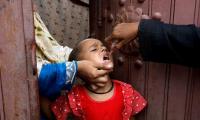Pursuit of education is impossible if there are no teachers available to make it a possibility for our deprived children. The supply-side barriers to education that we see in Punjab demands effective oversight by citizens.
Recent data on teachers acquired by the CPDI – a citizen-led initiative headed by Mukhtar Ali – under the Punjab Transparency and Information Act, 2013 has revealed a disturbing fact: there are over 81,466 seats lying vacant against 433,134 sanctioned posts, amounting to an overall teacher shortfall by 19 percent in the province.
A closer look into these numbers shows a far grimmer picture of teacher-supply disparities within districts. About 55 percent of the districts (20 out of 36 districts) have over 20 percent vacant seats, while for the rest of the districts, the vacant seats lie at 15 percent or above (with the exceptions of Jhang and Sialkot both of which have over at 13 percent of the vacant seats). Sialkot has the lowest share of 13 percent teacher shortfall whereas Jhelum, shockingly, has the highest at 39 percent (out of 4,034 seats, 1,591 are lying vacant).
If the numbers mentioned in the stamped copies provided by the education officer in Jhelum are to be believed, then the district is embroiled with serious teacher shortfall issues. The information received reveals 1,098 sanctioned posts against which 1030 seats are empty. That makes a 94 percent teacher shortfall for primary level schools alone. Other indicators point towards an 80 percent subject specialist shortfall for 182 secondary and 12 higher secondary schools in the district.
In Faisalabad, 52.3 percent of the sanctioned seats lying vacant for subject sspecialists for secondary (533) and higher secondary schools (63) have. For the headmasters, 59.12 percent of seats are lying vacant.
In Gujarat also, 71 percent of posts for headmasters/headmistresses are vacant. Serious shortages of subject specialists are also seen, with 84 percent of the sanctioned seats lying vacant for 317 secondary and 162 higher secondary schools in the district.
Each district presents a story of the dire situation of teachers there. With no teachers available, how schools manage students is no major mystery here. Students drop out when they find no learning at schools. Economically burdened parents will no longer feel persuaded to keep their children at school if their time is not meaningfully spent there.
A trend analysis of teacher recruitments as available in the School Education Census report 2020/21 shows a dismal performance in primary and elementary levels of school. The highest number of recruitments were observed between 2016 and 2018, with an increase by 29.5 percent in teacher recruitments for primary. However, the upward trend was not maintained, and a declining trend is strikingly noticeable with a drop of numbers by 11 percent between 2018 and 2020.
The most worrying observation is the drop in elementary teacher strength by 19.4 percent in a single year in 2020. The highest number of recruitments were observed in 2017; however, between 2018 and 2020, the drop in the strength is estimated at 23 percent.
The school education department’s website shows that over 5,000 teachers are expected to retire from service in 2022 and another 6,300 teachers will retire in 2023. That makes about another 11,300 teachers vacating their seats very soon. Add to the list the ‘erratic postings’ of the teachers, which are 4,421 in total [this means they will be transferred to other districts as they leave behind a void in the schools they are currently posted at]. With almost nil new recruitments between 2018 and 2020, and the increasing trend in teacher shortfall, where are we really headed?
There is much to lament about the poor education service delivery on the part of the provincial government. The reluctance of district education officials towards sharing education-related information seriously undermines the significance of RTI laws. The serious disparities observable within the districts call for more probes into the causes of low recruitments against the mammoth challenge of education deprivation for millions of children. The stalling of recruitment processes during a government’s tenure and then filling the vacancies right before elections for political mileage have been a most damaging practice by our politicians, as it has caused serious losses to our students and schools. As has been observed in previous government tenures as well, was the PTI-led government in Punjab intending to do the same?
The change in guard in Punjab will come with its own set of challenges and political point-scoring amidst a crisis. With the election for the new chief minister made controversial by the governor of Punjab, the delays and prolonging of the new cabinet as a result will add on to the provincial challenges. Perhaps with Hamza Shehbaz as CM-elect and Rana Mashud as the minister for education, replacing the PTI’s Murad Raas, the two will not repeat old mistakes once they come into power.
The current policies regarding teacher recruitment need to be reassessed for their feasibility. Teachers have long been complaining of not just the abysmally low basic pay, but also the non-revision of the rent and conveyance allowances. Teaching is no longer an appealing profession, as people have started looking for other industries that can promise them more protection and reasonable incomes. If such discouraging conditions for teachers remain unchanged, how can we expect the Punjab government to generate and attract new recruits at a time of an education crisis in Punjab? Those already in service are suffering because they don’t really know how to make ends meet and survive the rising inflation. Eventually, nobody will be left to teach our students, who too will feel compelled to drop out.
With over 19 percent of vacant seats in the province, one feels compelled to ask as to where the unutilized salaries against these posts have been directed to? This is an important question, keeping in mind the claim of 80-90 percent of the education budget in the province getting consumed by non-development expenditures (teacher salaries) of education – a claim that now needs more accountability efforts on the part of the Punjab government as there has been a persistent decrease in teacher strength since 2018.
Furthermore, it remains to be seen how the new incoming education ministry – for whatever time frame – will be able to address the structural fault that lies at the heart of not matching up the new initiatives with teachers’ existing capacities? What future is in store for education in the province? One shudders at the thought.
The writer is an education research consultant based in Lahore. She can be reached at: zeeba.hashmi@gmail.com
MPAs ask for their salaries and benefits to be at par with high court judges and exempt from tax
This system fosters and places premium on VIPs, facilitating VIP culture, which is alive and kicking
Imagine this waste covering over 15,500 cricket stadiums, piled three meters deep every year
If there is one thing that can be gleaned from politics today, it is that we no longer speak same language
Postman argues that “typographic mind” was yielding to “televisual mind”
Pakistan is well poised to meet opportunities that Artificial Intelligence will offer for developments in industries







